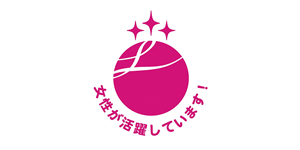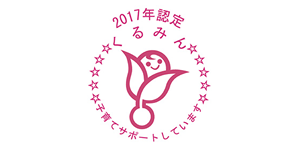Corporate Profile
Corporate Profile
Please refer to the following for the Corporate Profile
Company History
Please refer to the following for the company history.
Fujikura Group's Brand Logo
The history of the Fujikura Group's brand logo dates back more than 100 years ago to 1910, when Fujikura was reorganized from a partnership corporation to a joint-stock corporation. Subsequently in 1985, the Company established a new corporate mark in celebration of the 100th anniversary of its founding. Twenty-five years later in 2009, the present brand logo (registered trademark) was established and began to be used by Fujikura Ltd. first followed by its domestic consolidated subsidiaries in March 2011. Presently, the logo is also used outside Japan by the Company's wholly-owned subsidiaries.
The Fujikura Group's brand logo (registered trademark) is the most basic and essential tool used to communicate our brand image and is composed of the following three elements: the corporate symbol, the alphabetical letters "Fujikura" and the corporate color. The brand logo plays an important role as a symbol of the Fujikura Group and is designed to be regarded as proof of our reliability for customers and society at large and to attract more people to the Group.
The Fujikura Group is fostering its business in a number of countries around the world. In order to expand our business strategically in the global market, we are making a better use of our brand logo. At present, we have registered or are applying for registration of the logo in more than 150 countries.
|
Fujikura Group's Brand Logo |
Fujikura Group Brand Logo Policy(March 2011)
The Fujikura Group defines a uniform worldwide brand logo in order to advance our business esstrategically at the global level.
Participation in Industry Associations
| Name of the Organization | Outline of the Industrial Association |
|---|---|
| Japan Business Federation (KEIDANREN) | The Japan Business Federation (KEIDANREN) is composed of 1,350 representative companies of Japan, 109 nationwide industrial associations, and 47 regional economic organizations (as of April 1, 2017). As a comprehensive economic organization, KEIDANREN contributes to the self-sustaining development of the Japanese economy and improvement in Japanese people’s quality of life by invigorating companies as well as individuals and local communities that support companies. |
| Japanese Electric Wire & Cable Makers' Association (JCMA) | The Japanese Electric Wire & Cable Makers' Association (JCMA) is an industrial association that contributes to the development of Japan's economy and improvement in the quality of life of people in Japan by fostering further development of Japan's electric wire and cable industry. |
| Japan Electric Cable Technology Center (JECTEC) | The Japan Electric Cable Technology Center (JECTEC) is engaged in the testing, examination, certification and research of the safety and reliability of electric wires and cables; human resource development in the technological field including overseas training; and information exchange and database establishment/utilization. |
| Japan Electronics and Information Technology Industries Association (JEITA) | The Japan Electronics and Information Technology Industries Association (JEITA) works to foster the sound manufacturing, international trade and consumption of electronic devices and components as well as the comprehensive development of the Japanese electronics and information technology industries, with a view to contributing to the development of Japan's economy and culture. |
| Optoelectronics Industry and Technology Development Association (OITDA) | The Optoelectronics Industry and Technology Development Association (OITDA) is committed to fostering the comprehensive growth and development of the optical industry and improving Japanese people's quality of life, thereby contributing to Japan's socioeconomic development. |
| Tokyo-to Koto Sangyo Renmei (labor insurance administration association) | The Tokyo-to Koto Sangyo Renmei (labor insurance administration association) is contributing to the development of the Koto City in cooperation with the city government and related organizations. |
| Communication Cable Wire Association | The Communication Cable Wire Association aims to ensure healthy development and progress in communication wires through mutual cooperation among members, and to contribute to its members' prosperity and improve public well-being. *FY2016 CEO Masahiko Itou is inaugurated as president |
External Recognision
 |
FTSE4GOOD Global Index incorporated (From June 2016) |
 |
FTSE Blossom Japan Index (From June 2017) * Government Pension Investment Fund (GPIF) ESG Index Placement |
 |
S&P/JPX Carbon Efficient Index * Government Pension Investment Fund (GPIF) ESG Index Placement |
 |
Morningstar Socially Responsible Investment Index(From January 2016) * Morningstar Socially Responsible Investment Index |
 |
Official induction into the Japan Business Federation's "1% Club" for social contributions (July 2017) |
 |
Eruboshi Recognition (March 2017) Awarded Minister of Health, Labour and Welfare’s highest “acknowledgment of women’s workers (eruboshi)” |
 |
Kurumin Recognition (November 2016) Awarded Minister of Health, Labour and Welfare’s Kurumin Mark for “corporate child support” |
The Sweet Viburnum
|
In 1881, Zenpachi Fujikura moved to Kanda Awaji-cho as he looked for a way to recover from a series of business failures. The new residence was located adjacent to Kaku Shrine, which has a distinguished history. Zenpachi took care of the shrine's sacred tree (a sweet viburnum) every day, and perhaps due to this deed, he began to succeed in business. He started the electric wire business in 1885, and this became more prosperous by the day. After the death of Zenpachi, employees bought the tree from the shrine as a "living monument to the foundation of the company" and the tree has been taken care of by employees from then to the present. While the tree suffered in two fires, one caused by the Great Kanto Earthquake (1923) and the other by the air raid on Tokyo in 1945, new buds continued to sprout from the burned stump and each time the tree sprang back to life. This miraculous tree provided great motivation to employees who were devoted to the recovery of the manufacturing facilities in the wake of the disasters. |
|

